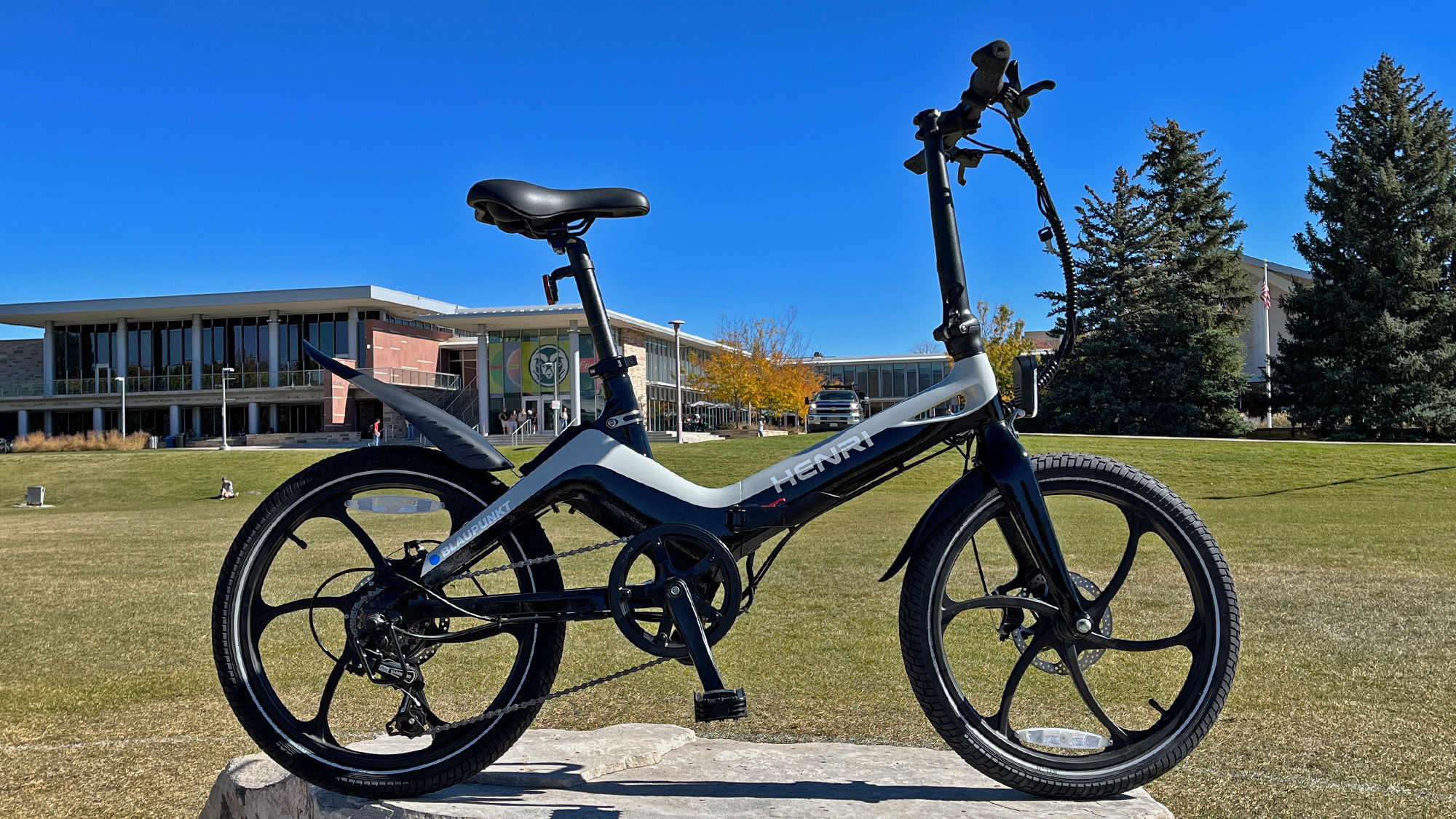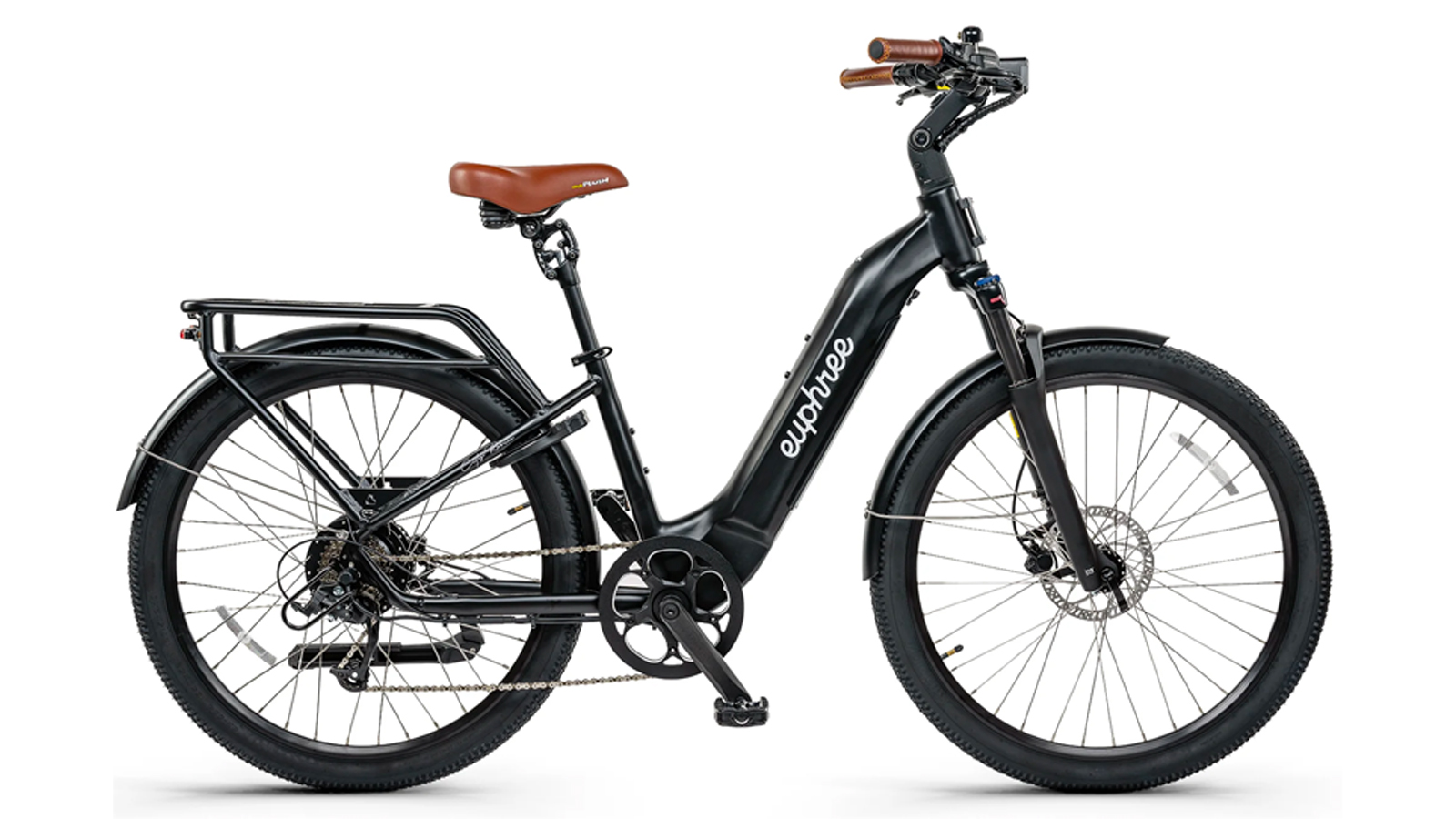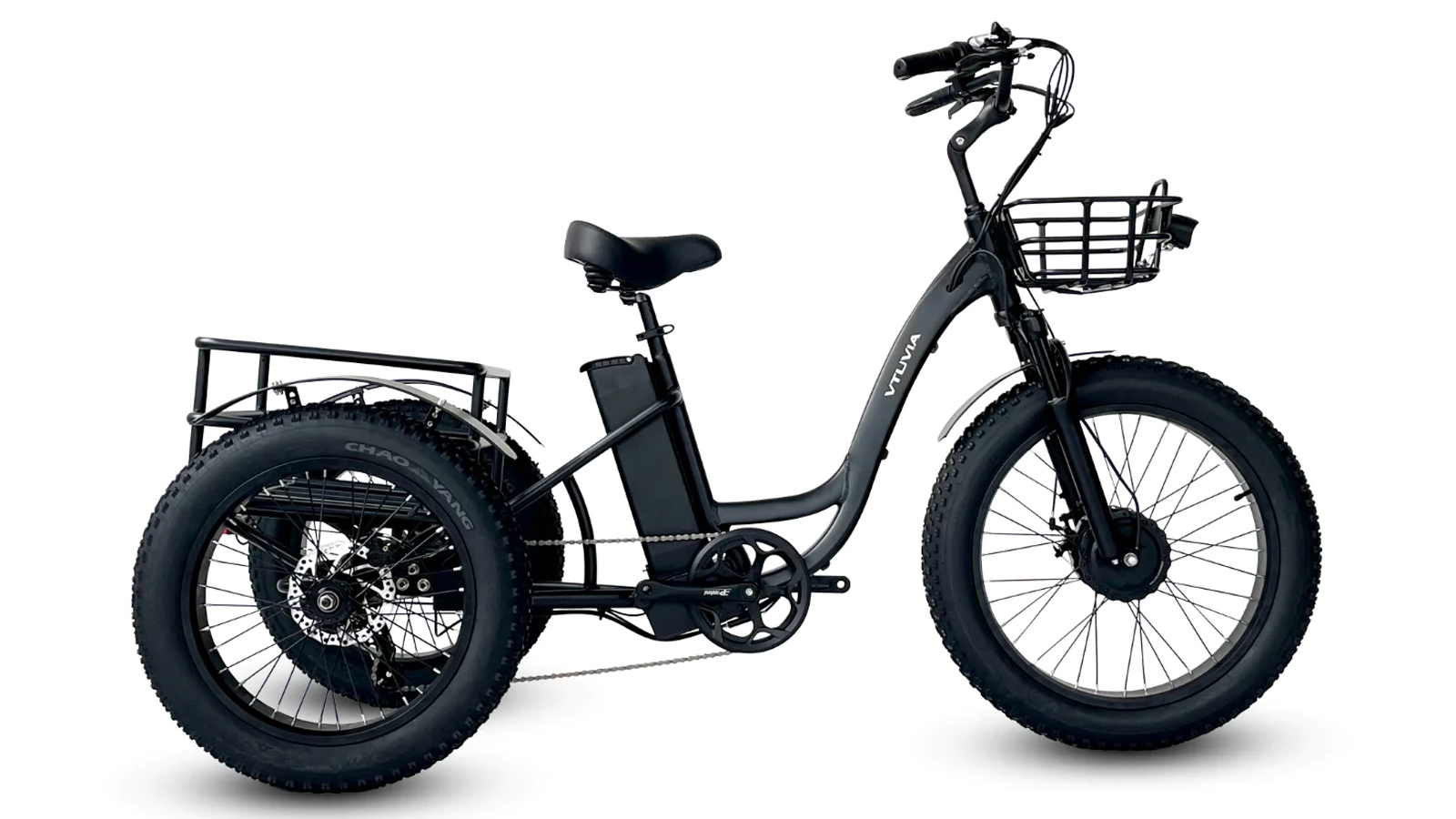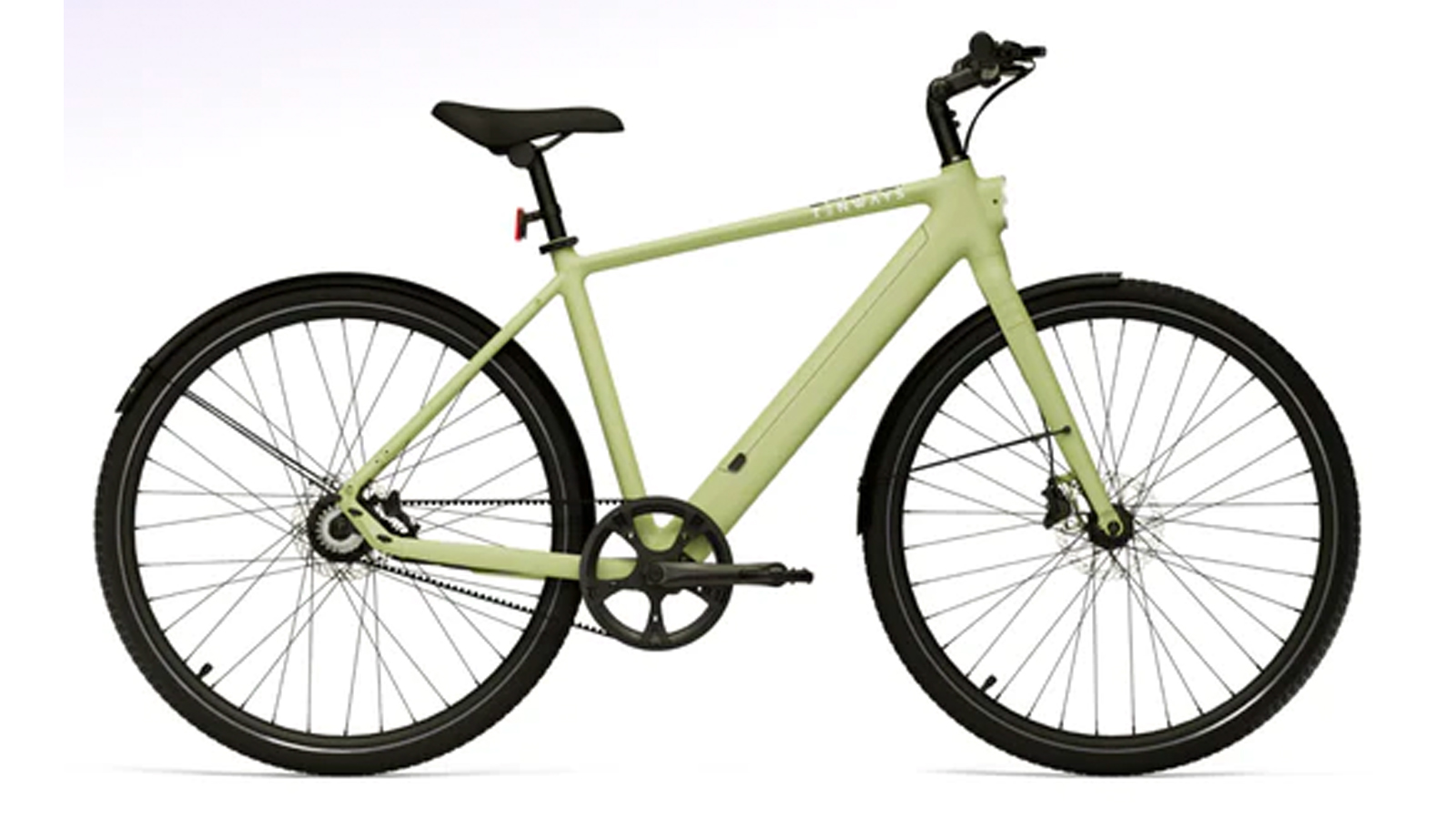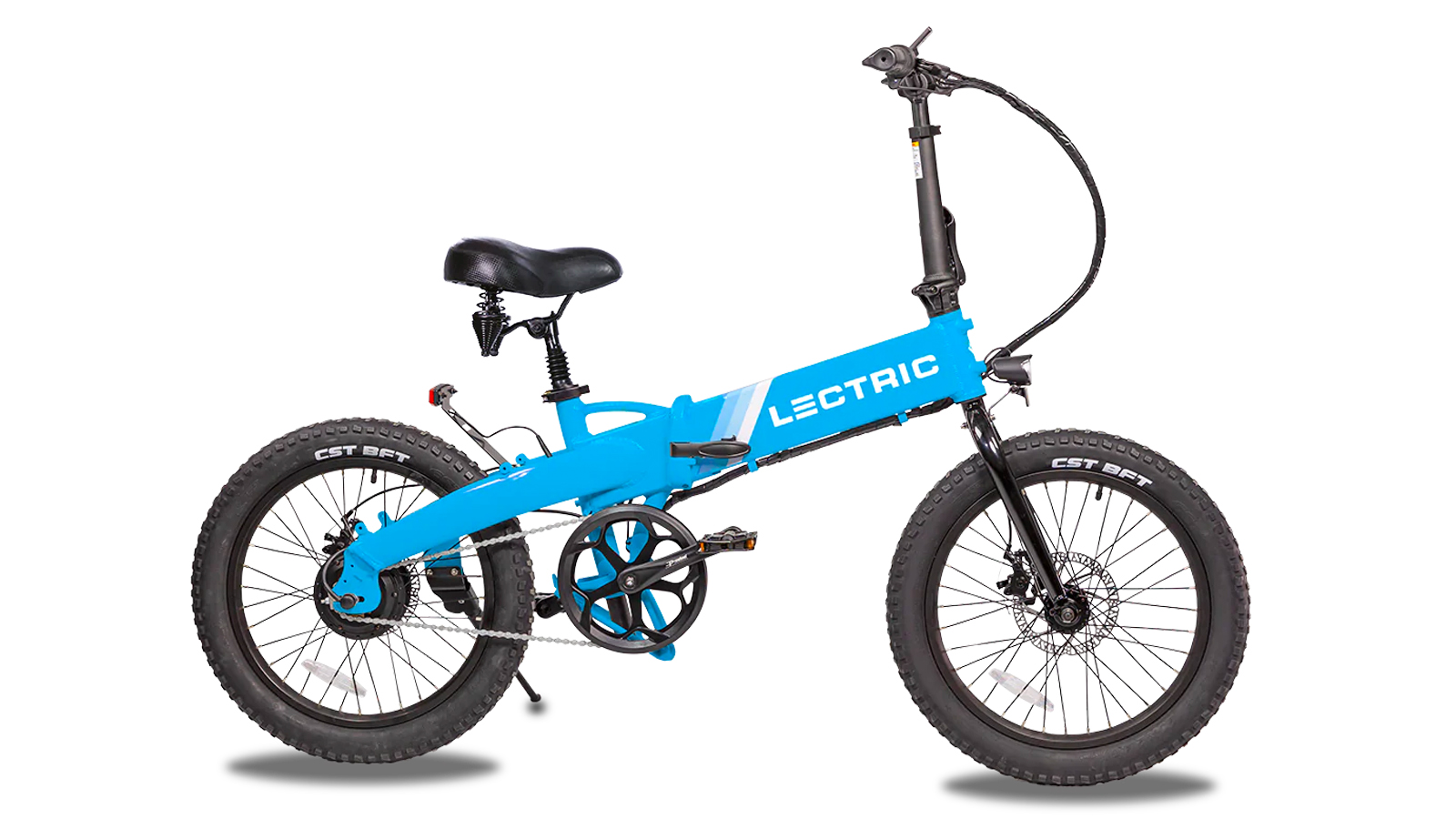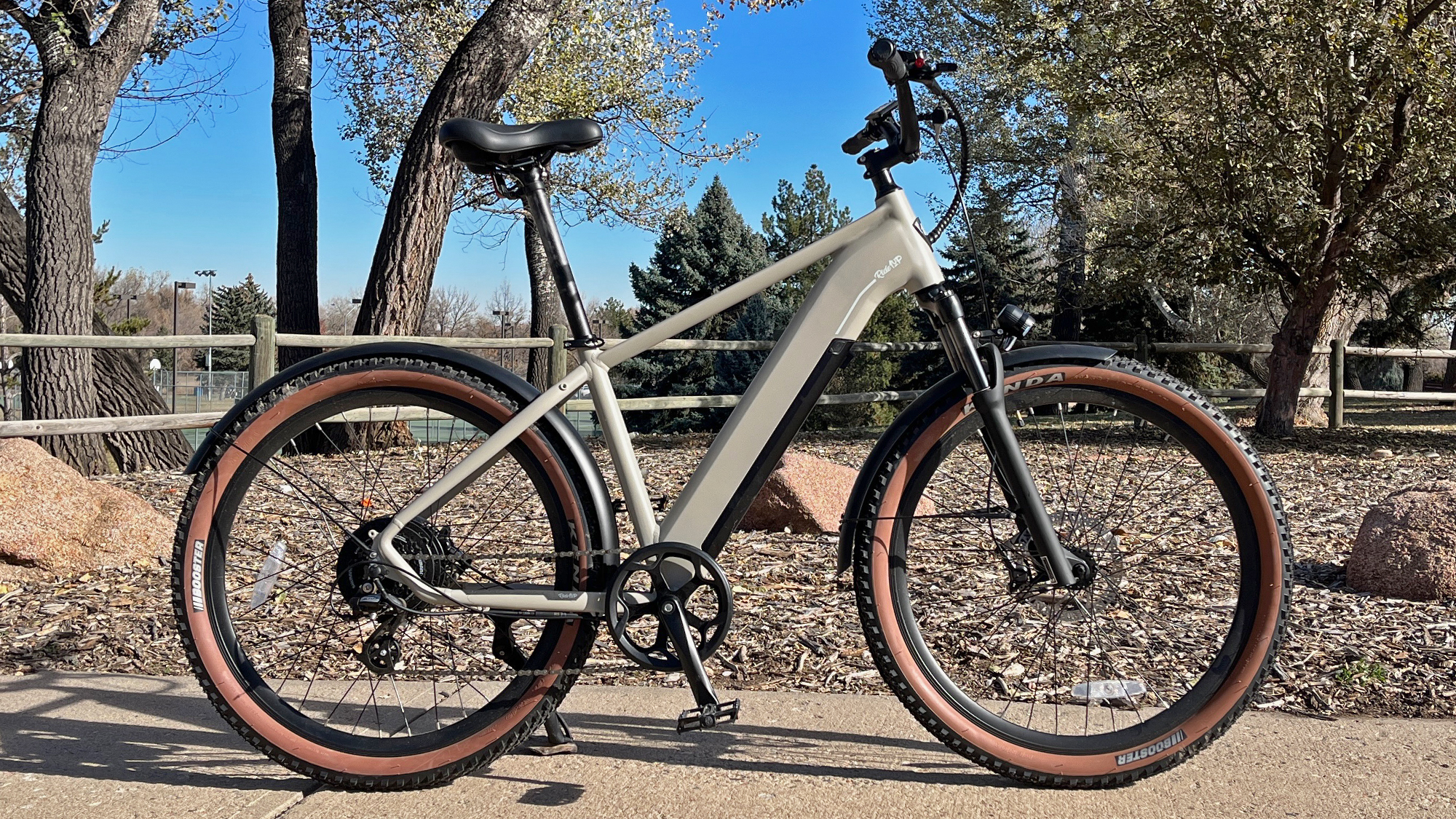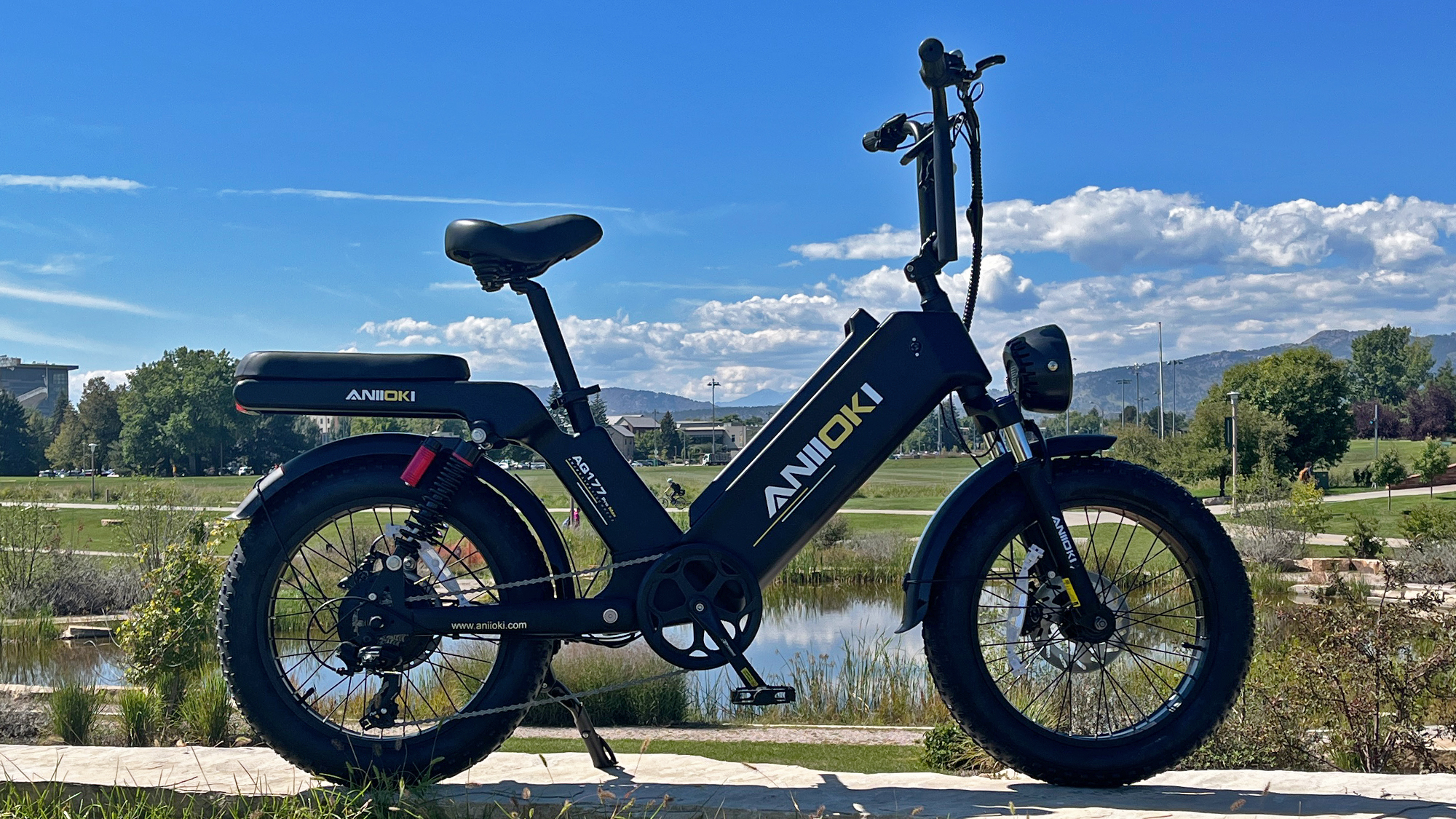E-bikes with fat tires are the SUVs of the cycling world; big wide tires provide a lot of traction and let you ride on any terrain, while the high volume of air provides a surprising amount of comfort. Fat tire e-bikes also tend to be a lot more stable due to their increased weight. Fat tire rides come in all shapes and sizes, from relatively small 20x4 inch folders up to gigantic offroad machines with 29x5 inch tires. If you haven't ridden on one of those big boys yet you're missing out! While professional opinions due differ on what constitutes a fat tire, we here at Electron Rider say "anything with tires at least 3.5 inches wide".
Fat tire e-bikes tend to be extra popular in coastal or desert areas, because - unlike a normal bicycle tire - you can ride a fat tire in the sand with no problem. The same is true for snow, although riding in freezing cold isn't quite so popular 🥶 For particularly deep and soft sand you'll probably need to drop your air pressure down, and you can actually drop it as low as 5 PSI and somehow still ride. PSI stands for "pounds per square inch", and these big rubber doughnuts have a lot of inches! Just remember that this low pressure and soft terrain will seriously hurt your efficiency and you should expect to get half, or maybe even less, of your usual range out of your battery.
The downside to e-bikes with fat tires is fairly obvious: they're big, heavy, and bulky. Such e-bikes weigh way too much for your typical bike rack so you'll have to pay more for a special heavy-duty one. They take up more space in the garage, can be difficult to park at crowded bike racks, and God forbid you have to carry them up and down stairs to your upper level apartment! Plus, these hefty cycles handle like... well, like the bike equivalent of an SUV. They're not very nimble or agile, and they take a lot more effort to pedal. Especially if you run out of juice, so try to avoid that!
When many people hear the term "folding bike" they tend to think small, as most folders are indeed small and lightweight, built to prioritize portability and minimize storage space. However, folding bikes come in all shapes and sizes, even full size rides with monster 26x4" fat tires!
The primary benefit of a folding bike is the reduced storage footprint. Transporting in a vehicle is generally easier, especially if you've got a small sized sedan. General storage is easier too; if you have a small apartment and need to bring your bike indoors it can be nice to just fold it up and stash it in a corner. This is why folders tend to be popular with the RV & Camper community, where room to store things is extra limited!
Without further adieu, here's our collection of all the folding electric bikes we know about. Enjoy!
Everyone will have a different definition of the term "affordable" when it comes to electric bikes. We get it; personal budgets and living costs vary greatly depending on where you live, what your priorities are, and so on. For the purposes of this category, we consider any electric bike that costs less than $2,000 to be "affordable". While there are still better products out there, for many people "a bike is a bike", and any e-bike that lets you get out and ride is a great e-bike to own. E-bikes in this category tend to offer good value without breaking the bank, and they're recommended if you're new to the wonderful world of electric bikes.
These electric bikes all cost less than $2,000 USD
Some people ride electric bikes for fun, but for others, it's a necessity! Dedicated commuters often don't own a car and use their e-cycles to get to and from work or school, running errands, and other general transportation purposes. A great thing about all bicycles (including the electric ones) is that all of them technically work for commuting; You can ride to work on even the most basic fixie and carry your lunch in your backpack. However, some electric bikes are purpose built for commuting, and those are the bikes this category is concerned with.
So, what makes an e-bike good for commuting? A good lighting system is a must-have. You need bright head-and-tail lights, ideally integrated to draw power from the main battery pack. Brake light activation, turn signals, and a horn are also highly recommended if you ride on busy city streets. At some point you will have to ride in nasty weather so make sure you've got sturdy, full-coverage fenders! Don't forget about cargo, either; carrying everything in a backpack is a hassle and won't work for grocery store runs. A sturdy rear rack is the best option, one with plenty of mounting points for mounting pannier bags or a luggage crate.
Those qualities are what we consider the "must haves" for commuting, but there are still more things to consider if you're trying to find the ultimate commuting ride. Large diameter wheels (at least 26 inches) have a much lower attack angle against bumps and thus roll more efficiently, especially if you have tires with an efficient hybrid tread, which provide a good balance between grip and efficiency. Front fork suspension is a good idea as well; cracks, bumps, and potholes can quickly add up to a sore body when you're bouncing over dozens of them every day! And finally, be sure to get an e-bike with a high capacity removable battery. High capacity so you can complete your entire trip without range anxiety, and removable so that you can bring it in to work or school with you - a locked up e-bike is much less likely to be stolen if it's missing the most important and expensive component!
Depending on your specific use case there might be other considerations for finding your perfect electric commuting machine... but this should cover all of the basics. Best of luck finding yours!
The three-wheeled platform of a trike makes it very stable - most of the time - and eliminates the good balance requirement of a standard bicycle. Trikes are great cargo haulers too, with sturdy frames and typically equipped with at least a large rear cargo area. Just keep in mind that all this stability really only applies at lower speeds, or while traveling in a straight line; there's serious tip-over risk when turning at speed or when riding on inclines at a diagonal angle.
Electric trikes are often driven by a front hub motor because having dual rear hub motors would require significant complexity, especially when turning. Having a front hub drive works fine for most use cases, just remember that the traction up there isn't as good so it will be easy to "peel out" if you hammer on the throttle from a standstill. Good trikes will have a rear wheel differential that allows the wheels to turn at different speeds, making them much better at cornering.
The legal definition of Class 1 is "electric bikes with a top speed of 20mph, power not exceeding 750 watts, and no throttle".
That's right - Class 1 e-bikes are pedal assist only! That might not sound very exciting, but there are good reasons to own one of these lower-powered electric cycles. First and foremost, Class 1 e-bikes are intended for cyclists who want to get exercise, primarily riding their bike like... well, like a bike! Many e-bikes in this category are equipped with responsive torque sensors that provide a much more satisfying ride feeling, and these e-bikes tend to be fairly lightweight as well.
Another reason to ride Class 1 is access, as these e-bikes are allowed virtually anywhere regular bicycles are - even most mountain bike trails! This includes multi-use trails and paths which usually don't allow the more powerful (and more dangerous) Class 2/3/4 electric bikes.
Having a lower power motor and no throttle hardware also helps to reduce costs, so Class 1 e-bikes tend to be the most affordable as well.
Did you know electric bikes have different classes? Class 2 electric bikes have a top speed of 20mph and can reach that speed with pedal assist or with a throttle. This is the most common electric bike class, and for good reason; these e-bikes are versatile, allowing you to get more exercise or relax on the throttle at will. You can also ride Class 2 e-bikes in the most places, as many trails (and even some entire cities) ban the use of other more powerful PEVs.
Keep in mind, the top speed of 20mph only applies to the electrical system; if you're feeling motivated (and want some exercise) you can pedal power your Class 2 cycle as fast as your heart desires!
The most common legal definition of a Class 3 electric bike is "pedal assist only with a top speed of 28mph, and power not exceeding one horsepower (750 watts)". That's right, no throttle! However, throttles are becoming more and more popular, especially on e-bikes equipped with a cadence sensor for pedal assistance. Those sensors have a delay when starting and just aren't very responsive, so having a throttle really helps to smooth out the ride experience. Plus... throttles are fun! This is why a lot of manufacturers are including throttles on their Class 3 models, with the caveat that the throttle cuts out at 20mph so you have to use pedal assist only to get up to the top speed of 28mph. These bikes are technically a sort of Class 2/3 hybrid, but it's simpler for everyone involved to just refer to them as Class 3.
A word to the wise: many e-bike manufacturers advertise their products as Class 3, but legally, they are not! Consider these questions about an e-bike you are considering:
- Is the motor power greater than 750 watts nominal?
- Can the e-bike go faster than 28mph?
- Can the throttle be used to go faster than 20mph?
If the answer to any of those questions is "yes", then technically that e-bike is not a Class 3. Unfortunately, it's not really any class, but rather in a legal grey area that's not quite e-bike, not quite moped or scooter. I actually had one of these products, an electric moped with a powerful 2,000 watt motor that could go about 40mph. I tried to register it as a moped or scooter with the Colorado Department of Transportation, and they rejected my registration form with the response "we don't register electric bikes." I wasn't able to find any answers regarding where I could legally ride that EV, and while I never got stopped or hassled by police, I know some areas take enforcement much more seriously.
Note: Many electric bikes are capable of going much faster than Class 3 speeds, but they are locked to 28mph in the display settings. More often than not you can "unlock" these settings to enable faster riding, which is designed for off-road, private property use. Of course, many people just unlock them and use them in their normal riding areas, and honestly I can't blame them. Being able to go 30-35mph can allow you to keep up with traffic and ride in automobile lanes in areas where there is no biking infrastructure... and it obviously means you get where you're going that much faster.
Mid Drive refers to the mounting point of the motor; on mid-drive e-bikes it's mounted directly at the bottom bracket between the pedal cranks, and connected directly to the pedaling drivetrain. This gives some awesome benefits, and mid-drive motors are generally considered better than their hub-drive counterparts, but there are still downsides to consider! Let's dive into the positives first.
The Positives: More Responsive, Great Hill Climbers
When discussing electric bike motor systems, "responsiveness" refers both to how quickly the motor responds to pedaling input, and also to how nuanced the response is. Most mid-drive motors are equipped with torque sensors which respond to the amount of pressure the rider is putting on the pedals, putting out more power when the rider is working hard. Many mid-drives have advanced PAS sensors that measure torque, cadence, and wheel speed, taking hundreds or even thousands of measurements per second and providing incredibly responsive motor output. The result feels amazing; rider and machine perfectly in sync. Mid-drive motors can also take advantage of the gears in the pedaling drivetrain. If you shift down to first gear so that pedaling is easy, that means the motor's job is easier too! This is why almost all electric mountain bikes are rocking mid-drives; they're vastly superior at hill climbing than hub motors, which are fixed in the wheel and do not interact with the pedaling drivetrain at all.
The Downsides: Cost, Wear & Tear, Knees
Whether you're buying a complete e-bike or building your own, mid-drive motors are significantly more expensive than hub motors. They're more technically complex, and typically have more advanced features, so you are getting more "bang for your buck", but not everyone needs that extra performance. Plus, mid-drive motors will cost more to maintain; at the very least you'll have to replace your chain and rear cassette more often. Remember, that fancy mid-drive is using your pedaling drivetrain to push the bike! That puts a lot of stress on the drivetrain components, and actually most mid-drives have their power limited to prevent breaking the chain. Some of the more premium mid-drives have built-in shift detection which will reduce power when shifting gears as that's when the components are most vulnerable to damage - think about how when riding a normal bike you pedal more lightly when shifting.
Something many people may not realize is that mid-drive motors can be hard on your knees. That fancy responsive torque sensor may feel great to ride on, but it requires that you put a lot more pressure on the pedals in order to get more power out of the motor. If you've got bad knees, or are recovering from a knee injury, you may not be able to push that hard, so hill climbing is going to be a bad time! This is compounded by the fact that most mid-drive systems don't include a throttle; although some manufacturers (notably Bafang) do make mid-drives that allow for a throttle, most do not. By contrast, almost all hub motor systems come standard with a throttle, and use cadence-based sensors which only require you to cycle the pedals with light pressure. If you're in the bad knees camp, it might be worth checking those out.
Electric bike technology has improved significantly in recent years, to the point that even the cheapest small-battery model should be able to squeak out 15 to 20 miles before dying. For some folks that's just not enough. Work commuters, delivery drivers, and long distance trekkers can put on some serious miles in a single day. Even if you're a more casual rider, range anxiety sucks! It can be really nice to ride for several days without having to worry about plugging in every time you get home.
All the bikes in this category have an estimated minimum range of at least 40 miles. This is your worst case "riding uphill into the wind with a monkey on your back" scenario; Under better conditions and with some brisk pedaling to help out you should be able to at least double that figure.
More is usually better, especially when it comes to suspension on your electric bike! Full suspension e-bikes provide the best ride comfort and can handle the toughest terrain. For commuters and city riders a simple suspension seatpost may provide enough cushion, but more serious off-road adventurers will need to go big with rear frame suspension. In addition to providing comfort, full suspension also helps protect your frame and wheels by absorbing the energy from potentially damaging impacts.
Electric bikes tend to be pretty heavy compared to their non-electric counterparts. Those electronic components weigh quite a bit, especially the battery, and other bike components (especially the frame) must be made thicker and stronger to endure the extra stresses of riding with electric power. This is especially true for Class 3 and above electric bikes, which can reach speeds of 28+ MPH, speeds most ordinary bicycles will almost never see. This is why most e-bikes weigh between 60 and 80 pounds! You might not notice that weight when riding - actually, it can be nice as it provides stability - but you'll certainly notice when lifting your e-bike onto a rack or carrying it up the stairs.
Electric bikes in this category weigh less than 50 pounds
50 pounds is still a bit heavy for a regular bicycle, but for an electric bike it's pretty darn good! These e-bikes are light enough to transport on most standard bicycle racks & mounts, and (hopefully) won't throw out your back if you need to carry them a short distance. Keep in mind that making a bike lightweight has it's costs; often literally, as lightweight e-bikes tend to be more expensive. E-bike frames still need to be strong, so lighter weight ones are often made out of more expensive materials such as carbon fiber or magnesium alloy. You will also pay the price of reduced battery capacity, as batteries are very heavy and reducing their size is one of the easiest ways to reduce overall weight.
